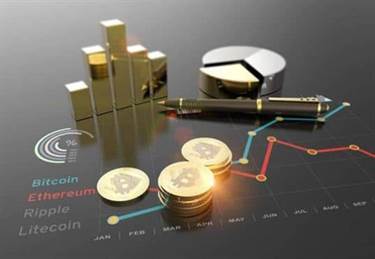But fog computing can’t work by itself because it doesn’t create data; it needs Edge computing. Both methods are great as a end result of they enhance user experiences, help information transfer easily, and scale back delays. Take the Karbon 800 as an example, designed for edge computing – it’s also fitting for fog computing. Choosing and establishing hardware should think about your project’s particular wants. With the constant technological advances, we now face day by day challenges to determine which know-how is extra advanced and efficient. Cloud, edge computing, and fog computing are a couple of technological advances made over the years.

Conservative estimates put the number of linked IoT units at 55 billion by the yr 2025. Compared to fog computing, cloud computing has a quicker system response time. Fog is safer than the cloud due to its distributed architecture and sophisticated design. A layer of fog lies between a cloud and electronic tools like a computer, laptop, or phone. The knowledge switch takes less time since fog nodes serves as a middleman.
What Is Fog Computing?
Whereas cloud computing relies heavily on centralized servers and communication channels, Fog computing spreads assets more evenly all through the network. One important difference between fog computing and cloud computing is speed. Cloud computing depends heavily on centralized servers which are situated distant from customers, which may result in slower response instances and lag.

However, the drawback to this method is that the info despatched to the cloud is huge and could be inefficient. Unnecessary information adds unwanted traffic to the cloud, which causes latency. Cloud computing needs 24/7 web access for its operations, while the the rest of the 2 can operate without web entry. This weblog covers numerous topics on industrial automation such as operations & administration, continuous & batch processing, connectivity, manufacturing & machine management, and Industry four.0.
In distinction, fog computing can course of information in real time, making it ideal for latency-sensitive functions. Edge and fog computing are modern expertise approaches which are gaining reputation. They both convey computing power closer to where data is created quite than counting on massive central knowledge facilities distant.
The purpose of this text is to check fog vs. cloud and inform you more about fog vs cloud computing prospects, in addition to their pros and cons. As a result, while we take a comparison of fog computing and cloud computing, we can witness many advantages. But in terms of information integration, fog computing presents a clear benefit as a end result of its improved processing velocity and flexibility. Edge and fog computing could be extra pricey than conventional cloud computing, specifically if you are a small business (SMB) in the early part. Deploying and setting distributed computing nodes, checking hardware compatibility, and dealing with assets require resources and can result in upfront prices.
Disadvantages Of Cloud For Iot
In essence, fog computing is a bodily location of computing gadgets a lot closer than cloud servers. It regulates which information ought to be despatched to the server and which could be processed regionally. In this manner, fog is an intelligent gateway that offloads clouds enabling extra environment friendly knowledge storage, processing and analysis. Among the main variations between these two forms of computing is their working environments. Cloud computing tends to work greatest in large, centralized data centers or servers where companies are delivered virtually with none physical interplay. However, Fog computing makes use of a much more distributed setup, with numerous smaller server clusters situated at varied factors across the network.

Cloud computing is a centralized mannequin the place information is stored, processed, and accessed from a remote knowledge middle, whereas fog computing is a decentralized model where data is processed nearer to edge units. Fog computing is a distributed computing mannequin that’s designed to enrich edge computing. It extends the capabilities of edge computing by offering a layer of computing infrastructure between the sting units and the cloud.
Disadvantages Of Fog Computing In Iot
Fog and edge computing can improve safety by offering additional security measures to edge gadgets, such as encryption and authentication. Additionally, fog computing can help to scale back bandwidth requirements and prices by lowering the quantity of knowledge that needs to be despatched to the cloud for processing. As a result, fog computing is a crucial part of many IoT functions. This signifies that cloud computing tends to be more susceptible to issues with quality and consistency than fog computing since failures at one location have an result on the entire system. Ultimately, whereas each fashions have their advantages and drawbacks, it’s clear that cloud computing just isn’t a good choice for all functions and industries. There is lots of debate within the tech world concerning the relative deserves of cloud computing and fog computing.
Overall, whereas both cloud and fog computing have their respective benefits, it is necessary to fastidiously consider which mannequin is greatest suited in your explicit wants. The centralized nature of a cloud system leads to excessive latency, while fog methods experience low latency because of their decentralized nature. The fog layer units sometimes carry out operations linked to networking. These devices have the potential to perform both networking and computational operations simultaneously. But nonetheless, there’s a distinction between cloud and fog computing on sure parameters. By using cloud computing companies and paying for what we use, we will avoid the complexity of owning and sustaining infrastructure.
On the other hand, fog computing is more applicable for smaller-scale functions which have minimal bandwidth necessities. A key problem in fog computing is reaching environment friendly data evaluation and processing at the fringe of a decentralized network. However, a key problem in cloud computing is dealing with network latency and excessive bandwidth utilization, particularly whereas processing data remotely. The primary distinction between fog computing and cloud computing is that Cloud is a centralized system, whereas Fog is a distributed decentralized infrastructure.

Ultimately, selecting the best computing mannequin will ensure the success of your IoT project. This kind of fog computing depends on the computing energy of servers positioned in the fog layer to course of and analyze data. Server-based fog computing is ideal https://www.globalcloudteam.com/ for purposes that require more computing energy than edge gadgets can present. The most significant difference between cloud computing and fog computing is their location.
Without a layer, a cloud must interface and interact with end gadgets directly, which takes longer than using fog computing. In cloud networks, information travels to the server from one user’s gadget and back all the means down to the others. With cloud computing, users don’t have to personal any technologies they use for their work, whether software or hardware. Edge computing can handle enterprise knowledge and send the results to the cloud.

Edge computing and fog computing make it possible to unravel the issue of latency between knowledge assortment and transmission and bandwidth points. Both edge computing and fog computing receive the same amount of consideration these days however are often misunderstood by those who need to learn their variations. In distinction, whereas fog computing may be distributed geographically, it is usually more localized than cloud computing and will only occupy a single geographic location. This design permits for greater location awareness with fog computing, as the information being processed by every individual node of the system is immediately related to its bodily environment. In this application, edge data centers, like their larger cousins, will provide the underlying platform to agnostically help fog community operations be they from Cisco, EMC, VMware or Intel.
Edge computing is being adopted to assist the proliferation of IoT gadgets and functions – especially those requiring real-time processing capabilities. The progress in IoT connectivity has been enabled by 5G mobile networks, low-cost sensors, and connected units. Fog computing is ideally an information processing layer between the edge and the cloud. The fog layer receives the information from the edge layer before it reaches the cloud.
This allows for quicker communication speeds and more efficient resource allocation, making fog computing an attractive alternative for so much of modern functions. Fog computing is a distributed computing mannequin, which means that it can scale to meet the needs of large and complex systems. The fog layer supplies extra computing assets and services to edge gadgets, which allows organizations to course of more knowledge in actual time.
- This implies that data has to journey all the method in which from one user’s device as much as a centralized server and back down once more to find a way to be processed by other customers.
- This blog covers quite a few matters on industrial automation similar to operations & administration, continuous & batch processing, connectivity, manufacturing & machine management, and Industry four.zero.
- Before cloud computing, organizations used to retailer and compute the data on exhausting drives and servers.
- Cloud computing may be nice if you present applications that don’t require real-time responses.
- It extends the capabilities of edge computing by providing a layer of computing infrastructure between the edge gadgets and the cloud.
- Cloud computing has superior safety measures in place to safe information within the cloud, whereas fog computing focuses on providing safety measures to edge gadgets.
The bodily distance between the cloud infrastructure and end-users can introduce latency and potential bandwidth limitations. To overcome the challenges and maximize the advantages of both fog computing and cloud computing, it is typically advisable to integrate these two fashions in IoT projects. There is one other method for information processing just like fog computing – edge computing. The essence is that the info fog vs cloud computing is processed immediately on the devices with out sending it to different nodes or knowledge centers. Edge computing is especially useful for IoT projects because it supplies bandwidth savings and higher data safety.